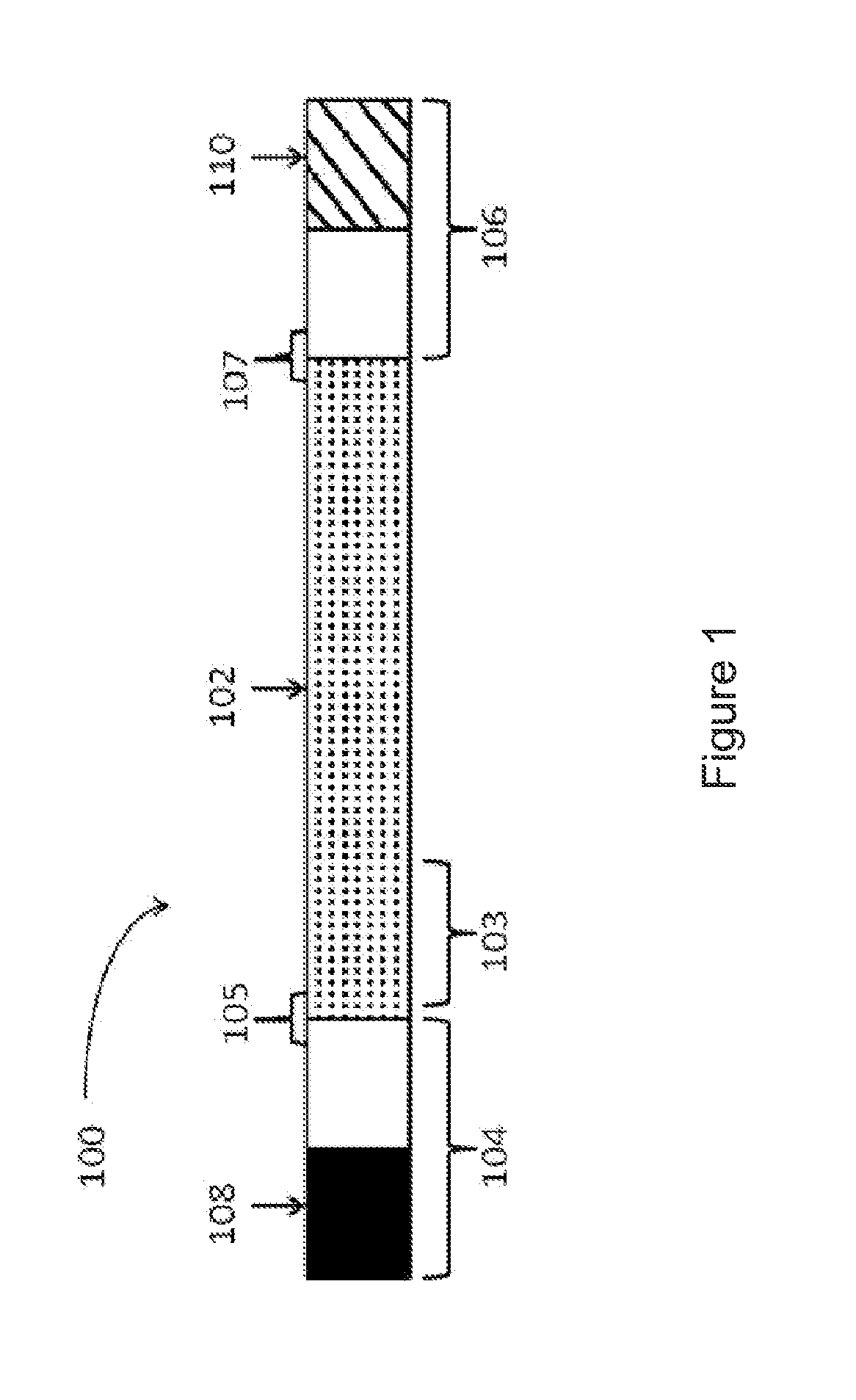Removal of DNA fragments in mRNA production process
a technology of mrna and dna fragments, applied in biochemistry apparatus and processes, organic chemistry, sugar derivatives, etc., can solve the problem that current available or reported methods do not address this deficiency
- Summary
- Abstract
- Description
- Claims
- Application Information
AI Technical Summary
Benefits of technology
Problems solved by technology
Method used
Image
Examples
example 1
Preparing Plasmids for cDNA Production
[0131]cDNA is produced to provide a DNA template for in vitro transcription. To prepare plasmids for producing cDNA, NEB DH5-alpha Competent E. coli are used in one example. Transformations are performed according to NEB instructions using 100 ng of plasmid. The protocol is as follows:
[0132]Spread 50-100 μl of each dilution onto a selection plate and incubate overnight at 37° C. Alternatively, incubate at 30° C. for 24-36 hours or 25° C. for 48 hours.
[0133]A single colony is then used to inoculate 5 ml of LB growth media using the appropriate antibiotic and then allowed to grow (250 RPM, 37° C.) for 5 hours. This is then used to inoculate a 200 ml culture medium and allowed to grow overnight under the same conditions.
[0134]To isolate the plasmid (up to 850 μg), a maxi prep is performed using the Invitrogen PURELINK™ HiPure Maxiprep Kit (Carlsbad, Calif.), following the manufacturer's instructions, which are as follows: thaw a tube of NEB 5-alpha...
example 2
PCR for cDNA Production
[0136]PCR procedures for the preparation of cDNA are performed using 2× KAPA HIFI™ HotStart ReadyMix by Kapa Biosystems (Woburn, MA). This system includes 2× KAPA ReadyMix12.5 μl; Forward Primer (10 uM) 0.75 μl; Reverse Primer (10 uM) 0.75 μl; Template cDNA 100 ng; and dH20 diluted to 25.0 μl. The reaction conditions are at 95° C. for 5 min. and 25 cycles of 98° C. for 20 sec, then 58° C. for 15 sec, then 72° C. for 45 sec, then 72° C. for 5 min. then 4° C. to termination.
[0137]The reverse primer of the instant invention incorporates a poly-T120 for a poly-A120 in the mRNA. Other reverse primers with longer or shorter poly(T) tracts can be used to adjust the length of the poly(A) tail in the mRNA.
[0138]The reaction is cleaned up using Invitrogen's PURELINK™ PCR Micro Kit (Carlsbad, Calif.) per manufacturer's instructions (up to 5 μg). Larger reactions will require a cleanup using a product with a larger capacity. Following the cleanup, the cDNA is quantified u...
example 3
In Vitro Transcription (IVT)
[0139]mRNAs according to the invention may be made using standard laboratory methods and materials. The open reading frame (ORF) of the gene of interest may be flanked by a 5′ untranslated region (UTR), which may contain a strong Kozak translational initiation signal and / or an alpha-globin 3′ UTR which may include an oligo(dT) sequence for templated addition of a poly-A tail. The mRNAs may be modified to reduce the cellular innate immune response. The modifications to reduce the cellular response may include pseudouridine (ψ) and 5-methyl-cytidine (5meC, 5mc or m5C). (See, Kariko K et al. Immunity 23:165-75 (2005), Kariko K et al. Mol Ther 16:1833-40 (2008), Anderson BR et al. NAR (2010); each of which are herein incorporated by reference in their entireties.)
[0140]The ORF may also include various upstream or downstream additions (such as, but not limited to, β-globin, tags, etc.) may be ordered from an optimization service such as, but limited to, DNA2.0...
PUM
| Property | Measurement | Unit |
|---|---|---|
| length | aaaaa | aaaaa |
| liquid chromatography- | aaaaa | aaaaa |
| mass spectrometry | aaaaa | aaaaa |
Abstract
Description
Claims
Application Information
 Login to View More
Login to View More - R&D
- Intellectual Property
- Life Sciences
- Materials
- Tech Scout
- Unparalleled Data Quality
- Higher Quality Content
- 60% Fewer Hallucinations
Browse by: Latest US Patents, China's latest patents, Technical Efficacy Thesaurus, Application Domain, Technology Topic, Popular Technical Reports.
© 2025 PatSnap. All rights reserved.Legal|Privacy policy|Modern Slavery Act Transparency Statement|Sitemap|About US| Contact US: help@patsnap.com

